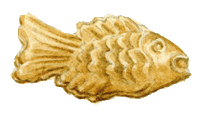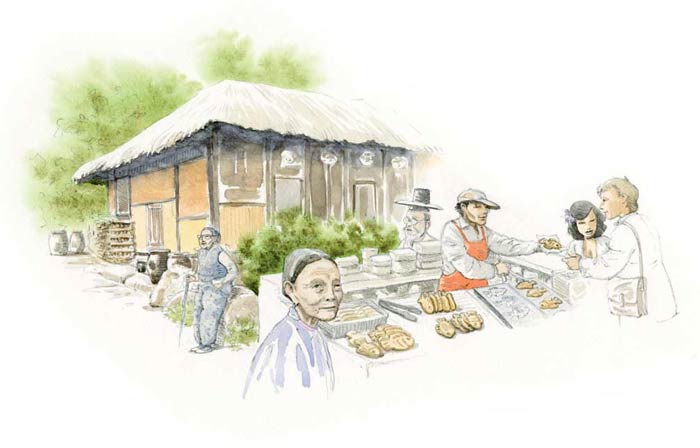Bungeoppang

Form: Shaped like a goldfish
Country of origin: North and South Korea
What distinguishes it from other methods of bread making: Stuffed with red bean paste and cooked in pans resembling waffle pans
Category of bread: (9) Siamese twin of Japanese taiyaki, a fish-shaped griddlecake, and distant relative of Latin American empanada and Chinese baozi
Particularity: Eaten hot in the street
Ingredients: Dough: Wheat flour; rice flour; fat; eggs; salt; sugar. Filling: Japanese adzuki bean or red paste

North and South Korea
In Korean, the term bungeo signifies “goldfish” and the term ppang bread. This is the first fish-shaped bread in our voyage around the world. Bungeoppang seems to have crossed this arm of the sea that separates Korea from Japan, from where it came originally. In Japan it is called taiyaki, and is said to have been invented at the beginning of the 20th century. But since the word ppang, which is part of the name of the fish-shaped bread in question, seems to have borrowed the French word pain for bread, bungeoppang appears above all to be a pure product of globalization.
Korean bread makers are quietly breaking into the market with their bungeoppang, offered most everywhere in North and South Korea as street food. Most of the products are sold under the name ppang, and are imported and are similar to the Anglophile countries’ white sandwich bread.
The batter for bungeoppang is quite similar to that of waffle batter, with the exception of the use of rice flour. The rice flour makes it easier to obtain a supple, springy bread, which gives all the flavor to these fish-shaped griddlecakes. Before poured into the pans and cooked, they are filled with the red bean paste. Bungeoppang is eaten hot.

